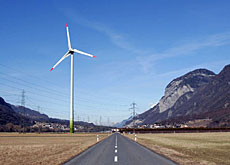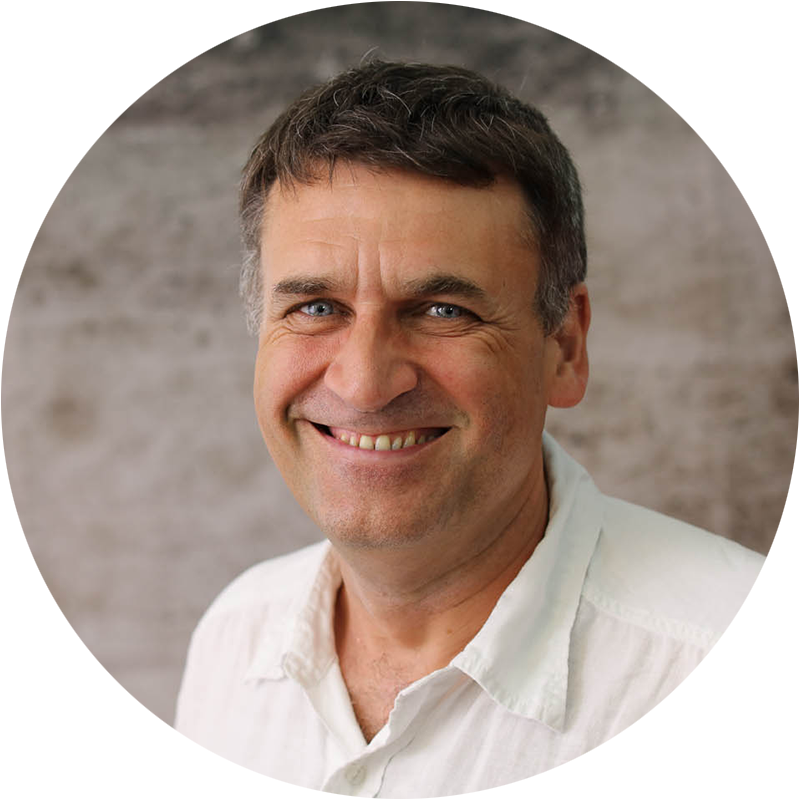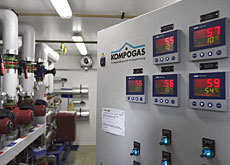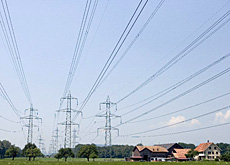Court puts wind in sails of renewable energy

A recent landmark ruling by the Swiss Federal Court recognising wind farms as being in the public interest could have wider implications across the country.
Judges at Switzerland’s highest legal authority said the fact that wind power does not currently contribute significantly to the country’s energy supply should not be allowed to hinder its development.
The Federal Court thus reversed a decision by a lower court in Neuchâtel, which had ruled in favour of residents opposed to the building of seven turbines in the Vue des Alpes area of canton Jura.
Neuchâtel judges had decided that protection of the landscape – in this case the Jura Mountains – was the overriding consideration, given the “small if not almost negligible” contribution wind power could make to the country’s overall energy supply.
Opponents of the plan had pointed out that there was simply not enough wind for such an installation in the area.
However, these arguments did not convince the five judges of the Federal Court. The fact that wind power contributes only minimally to the energy supply could not be regarded as a “decisive” factor”, they said.
Public interest
The policy adopted by the Swiss government and the cantons favours the development of renewable forms of energy, and for this reason wind farms must be regarded as being in the public interest.
In addition, the Lausanne judges found that the Neuchâtel court had ascribed excessive importance to protection of the countryside.
If given the green light, the Vue des Alpes wind farm would at a stroke double the quantity of electricity generated by harnessing the wind in Switzerland.
The plan is to erect seven 93-metre-high turbines on a site covering 111 hectares. Each year, this installation would produce around 14 Gigawatts/hour of electricity, enough to meet the energy needs of between 4,000 and 5,000 households.
The fear is that this farm would be the first of many in the area. “No one has given even the slightest reassurance that this will not be the case,” said Richard Patthey, secretary of the Swiss Foundation for the Protection of the Countryside
For its part, the Swiss Federal Energy Office intends to develop renewable forms of energy. Part of this could involve setting up between five and ten new wind farms by 2010. This would cover the needs of up to 30,000 households.
Enormous potential
According to Martin Kernen, head of Swiss-Eole, the body responsible for promoting wind power in Switzerland, “the potential is enormous” for wind power and in the future it could cover an estimated two per cent of the country’s electricity consumption.
“The intention of all the parties concerned – including the principal environmental protection bodies – is to achieve coordinated and harmonious development over a number of sites,” Kernen explained.
At present, a Swiss firm or private individual can opt to be supplied with renewable energy, but this is more expensive than power generated by hydroelectric or nuclear plants, which account for about 95 per cent of production in Switzerland.
However, as part of a review of energy policy, parliament is considering introducing a measure to cover the costs of generating renewable forms of energy, as already happens in neighbouring Germany and other countries.
In other words, the additional costs of “green” energy would no longer be passed on to the individual consumer but to the population as a whole.
“Financing projects of this kind,” concludes Kernen, “would guarantee a reasonable return on investment. This would give a great boost to the development of renewable forms of energy”.
swissinfo, Daniele Mariani
Between 2001 and 2005, the total power output of wind turbines worldwide increased from 20,000 to 60,000 Megawatts.
The electricity produced in this way is sufficient to meet the needs of 35 million households.
With an output of 18,428 MW, Germany is the leading wind power nation.
Next come Spain (10,027 MW), the United States (9,149 MW), India (4,430 MW), Denmark (3,122 MW), Italy (1,717 MW) and China (1,260 MW).
In Austria, a country not unlike Switzerland in terms of geography, wind farms produce 819 MW of electricity.
At present, there are 14 wind farms in Switzerland. Taken together, their output is around 12 Megawatts.
The largest installation is that of Mont-Crosin, in the Bernese Jura, whose eight turbines generate around 60% of the country’s wind energy.
Electricity generated by wind turbines covers a mere 0.012% of the country’s energy requirements.
One objective of Swiss energy policy is to increase this figure to between 0.1 and 0.2 per cent by 2010.

In compliance with the JTI standards
More: SWI swissinfo.ch certified by the Journalism Trust Initiative




You can find an overview of ongoing debates with our journalists here. Please join us!
If you want to start a conversation about a topic raised in this article or want to report factual errors, email us at english@swissinfo.ch.